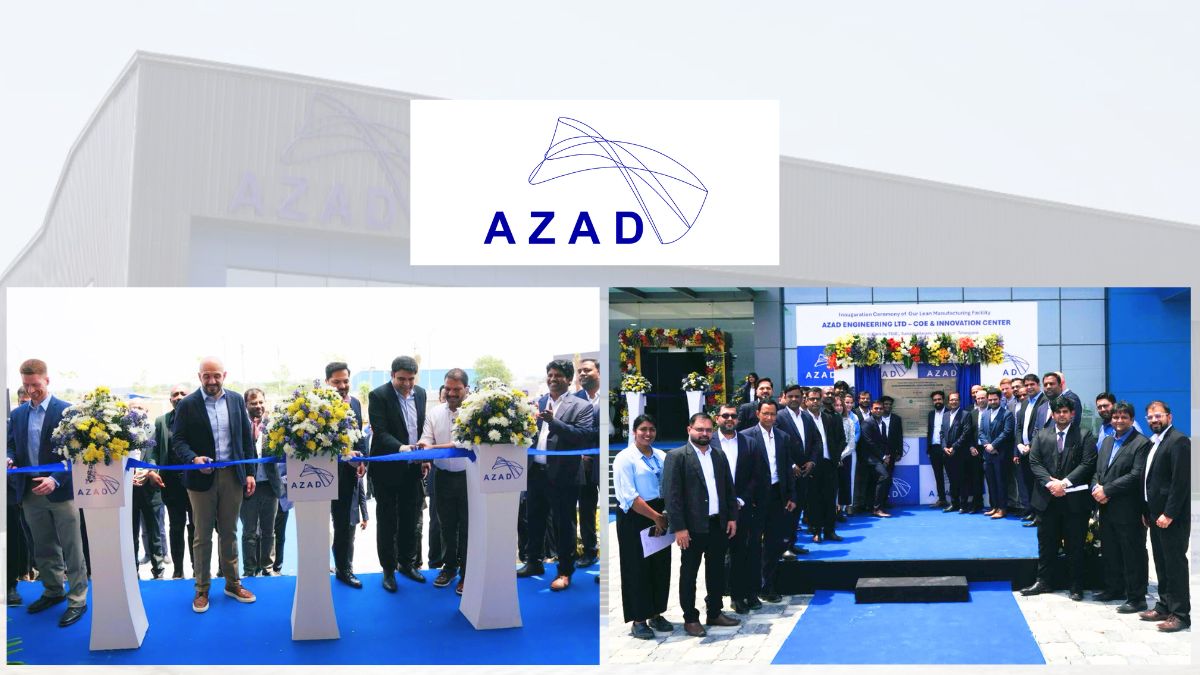As robots grow in strength, industries integrate them with human workforce

Coventry, UK: It is not every day that humans who aren’t developing these systems or using them, get to watch massive industrial robots at work, from close quarters. One of them, the Fanuc M2000iA/2300 robot, which is the largest commercially available industrial robot is prowling the test labs at the Manufacturing Technology Center’s (MTC) hub in Coventry, UK. MTC is a research and technology organisation which attempts to link the industry with academia, for refining research for the real world.
The strengths have already been used to demonstrate the accurate positioning of large volumetric components, including retrofitting a JCB Hydradig excavator with a redesigned arm that can move in more directions.
A robot, that’s helped another machine become more capable. At MTC, that’s just one of the many pieces of a puzzle they’re working with, including private 5G networks for manufacturing as well as a test structure for building and construction prototypes.
In a conversation with HT, Chris White who is the director of Industrial Policy Research Center at MTC believes that robots and humans must work together in manufacturing units, thereby reducing the load of mundane tasks on the latter.
The massive Fanuc M2000iA/2300 robot isn’t the only one. Recently, the MTC developed an autonomous robotic rat, which they say can scurry along underground pipes for tasks such as inspection work. “There are lots of opportunities for robots and humans to work together to improve the way we do things and to reduce some of the repetitive tasks that otherwise a robot can do,” says White.
Q. Industrial-grade robotics have evolved into extremely powerful machines. Alongside the advancement we’ve seen in AI recently, how will it impact robotics? Will it simplify the development of solutions and use cases?
A: I believe so. One of our challenges is reshoring manufacturing. Think about an industry such as textiles. How can we do that? At the moment, the amount of waste is reducing further and further. To bring our textile production back to the UK, will be amazing. Automotive and automation is going to play a huge part. It’s not just the UK. It’s about the international industry, the way that we become more competitive. That way we can learn from skills across the world. The way to be more productive in the way we do things is going to be so important as we move forward, not least to things like net zero.
Q. What sort of solutions are businesses looking for, and are they more relevant for some industries?
A: We’re the people that help an idea become ready for an industry. Most can be from the aerospace sector, food and drink sector, right across the spectrum. We make sure we have the right technologies from digital to lasers to construction. We’ve got a load of sectors but underneath, we’re very much sector agnostic. We’re happy to work with the automotive sector and other industrial sectors, all to improve productivity, and scaling up.
Q. How important is India’s role and how broad can be the partnership between both countries?
A: I was very lucky to be with the industry and with the mayor of the West Midlands on a trade mission in November, to understand better the landscape of what industry looks like in India. Very sophisticated, and has a huge amount of world-class facilities. There are also a lot of opportunities for both countries to work together, for Indian companies to come to the UK and vice versa. We can use our knowledge, expertise and skills in India and also vice versa.
It’s about us adding to what the market can support and what we can do to work together.
Q. With robotics maturing, are they ready to replace the human element in manufacturing, considering they have no productivity or efficiency variables?
A: I think there are a lot of opportunities for robots and humans to work together to improve the way we do things. It will reduce some of the repetitive issues that, now otherwise a robot can do. It makes us more competitive and we’re able to use the skills we have in in in better, more useful ways. I’ve seen some world-class factories where they use robots very appropriately to enhance production and enhance productivity.

Atul Tiwari is a seasoned journalist at Mumbai Times, specializing in city news, culture, and human-interest stories. With a knack for uncovering compelling narratives, Atul brings Mumbai’s vibrant spirit to life through his writing.






